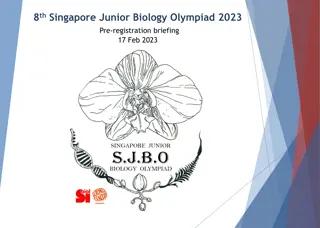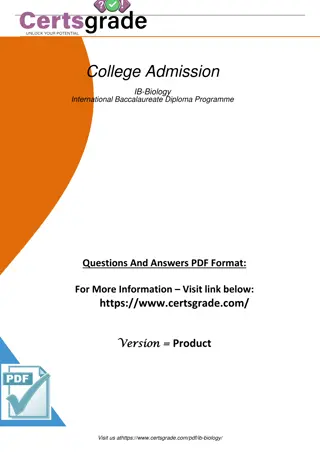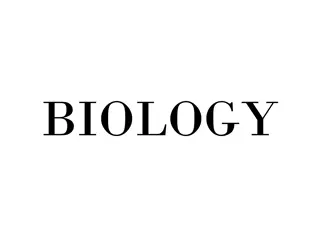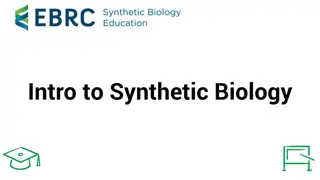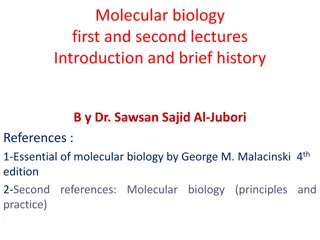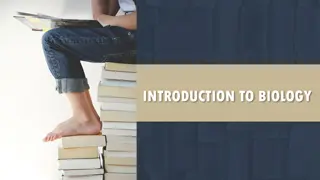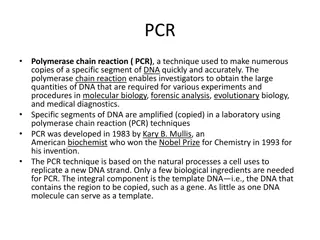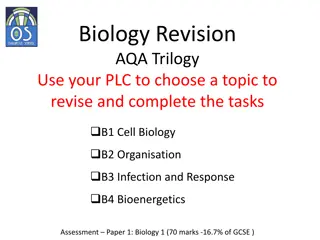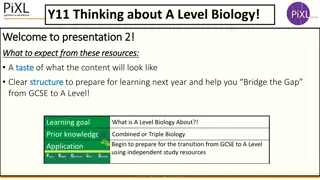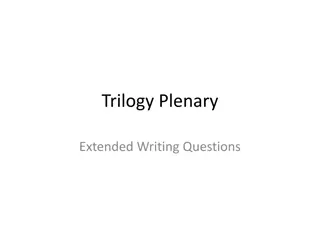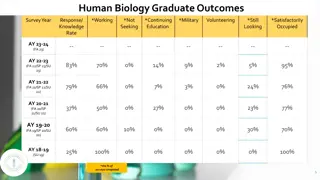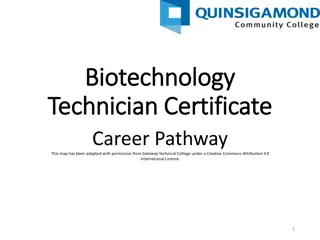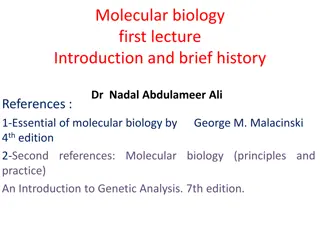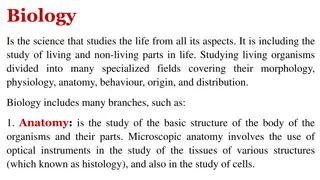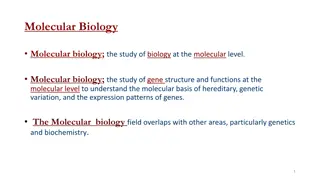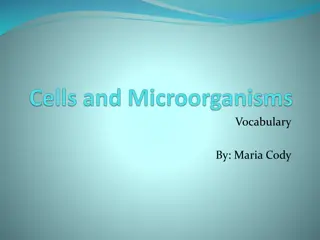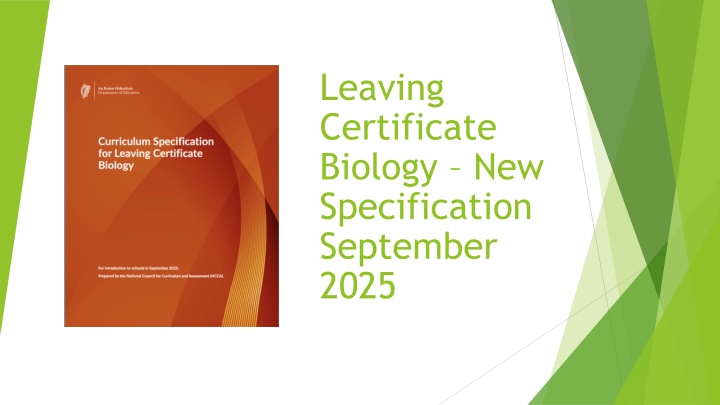
New Leaving Certificate Biology Specification Overview
Explore the new Leaving Certificate Biology Specification introduced in September 2025, featuring four strands including the Nature of Science and contextual strands focusing on the Organization, Structures, and Interactions of Life. Dive into learning outcomes, thematic learning, and more to engage with contemporary biological issues.
Uploaded on | 1 Views
Download Presentation

Please find below an Image/Link to download the presentation.
The content on the website is provided AS IS for your information and personal use only. It may not be sold, licensed, or shared on other websites without obtaining consent from the author. If you encounter any issues during the download, it is possible that the publisher has removed the file from their server.
You are allowed to download the files provided on this website for personal or commercial use, subject to the condition that they are used lawfully. All files are the property of their respective owners.
The content on the website is provided AS IS for your information and personal use only. It may not be sold, licensed, or shared on other websites without obtaining consent from the author.
E N D
Presentation Transcript
Leaving Certificate Biology New Specification September 2025
Overview and Structure Four Strands Unifying Strand The Nature of Science Three contextual strands The Organisation of Life The Structures and Processes of Life The Interactions of Life.
Overview and Structure contd. Three crosscutting themes Health Sustainability Technology Through these themes students are to engage with contemporary issues in biology.
Overview of new LC Biology course
Strands of study and learning outcomes
Unifying Strand: The Nature of Science This strand builds on the unifying strand from Junior Cycle Science and continues to bring to life the practices and norms underpinning the facts, concepts, laws, and theories of science.
Learning Outcomes U1 Scientific knowledge U2 Investigating in Science U3 Science in society U4 Biological reasoning
Strand 1: The Organisation of Life In this strand students gain knowledge and understanding of a number of core concepts to explain the organisation and diversity of life. They learn about life s characteristics, cellular basis, chemicals, genetic information and origins.
Learning Outcomes 1.1 The Characteristics of Life 1.2 The chemicals of life: biomolecules 1.3 The unit of life cells 1.4 The information of life- genetic inheritance 1.5 The origins of life evolution
Strand 2: The Structures and Processes of Life In this strand students learn how the unique and diverse structures within living things allow life to function through a number of processes taking place within cells, organs and systems. As students investigate the structures and processes of living things, they appreciate that all life depends on the transfer of energy and matter through these processes. They recognise that all organisms store information and rely on proteins in their cells, including enzymes, to carry out specific functions. They learn about the cellular processes of photosynthesis, respiration, cell division and protein synthesis as fundamental for transference of energy, matter and information through the living world.
Learning Outcomes 2.1 Enzymes 2.2 Cellular processes - photosynthesis and respiration 2.3 Information of life - cell division, protein synthesis 2.4 Response 2.5 Reproduction 2.6 Transport and transfer (physiological processes)
Strand 3: The Interactions of Life In this strand, students look at the systems of the living world at different scales. As they investigate interactions of individuals and groups in ecosystems, they learn that no organism in nature is independent of the systems in which it lives, functions and dies. In this strand students learn how life interacts with life, with the non-living world and with the modern world. They learn how knowledge and innovation interact with the information of life through genetic engineering, DNA sequencing and bioinformatics. They consider the role of microorganisms and how their structures and functions make them suitable for many advances in biotechnology. (p28)
Learning Outcomes 3.1 Ecology, ecosystems, biodiversity 3.2 Microorganisms and Nutrient Cycling 3.3 The information of life genetic engineering
Assessment Written assessment, Leaving Certificate Biology will be assessed at two levels, Higher and Ordinary. Additional assessment component - a Biology in Practice Investigation
Additional Assessment Component Investigation Brief Term 2 of 5th Year. The time allocation for the additional assessment component is up to 20 hours. Submit report of investigation in 6th Year.
Overview of the process for completion of the Biology in Practice Investigation

![❤[READ]❤ Cosmic Biology: How Life Could Evolve on Other Worlds (Springer Praxis](/thumb/21556/read-cosmic-biology-how-life-could-evolve-on-other-worlds-springer-praxis.jpg)
